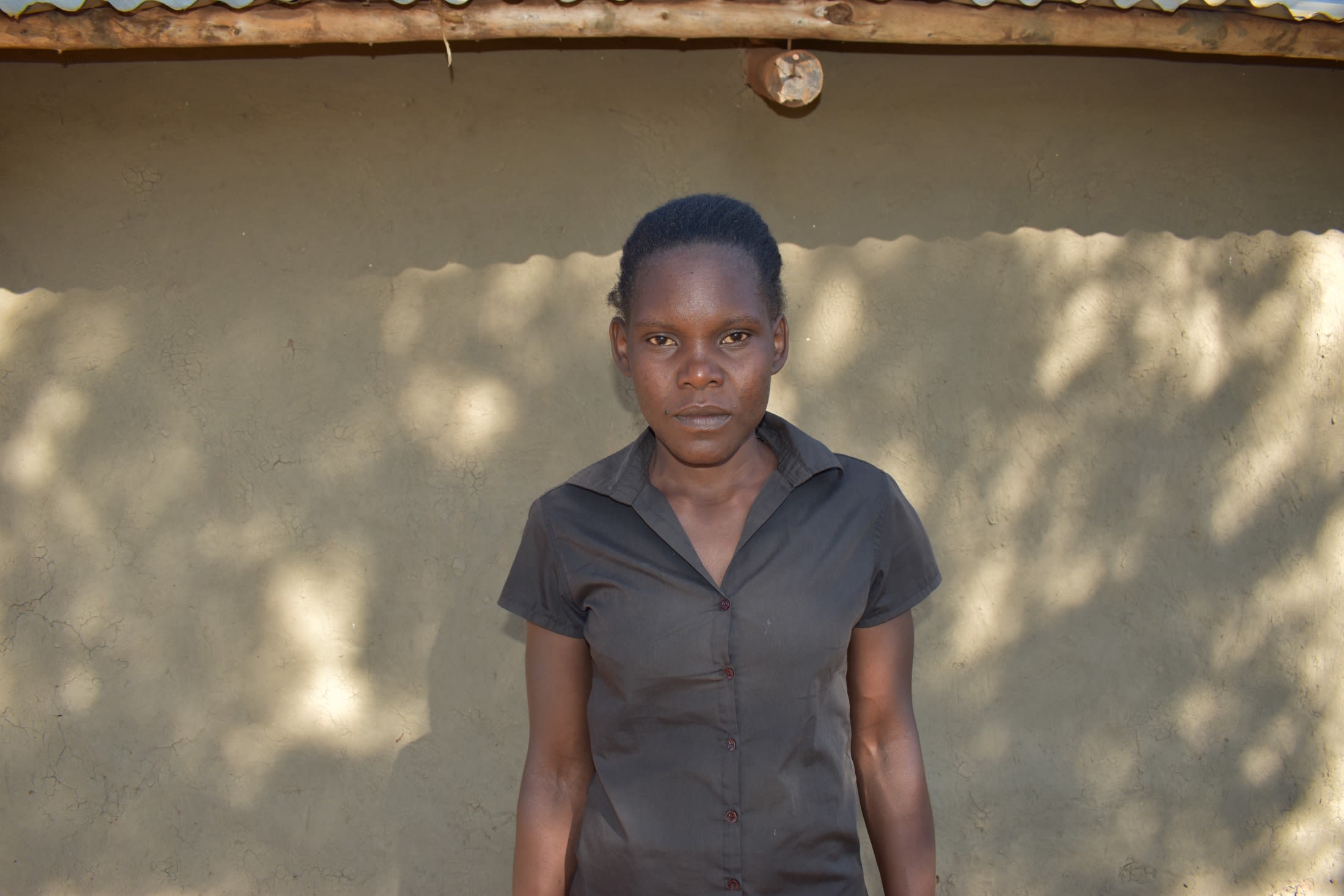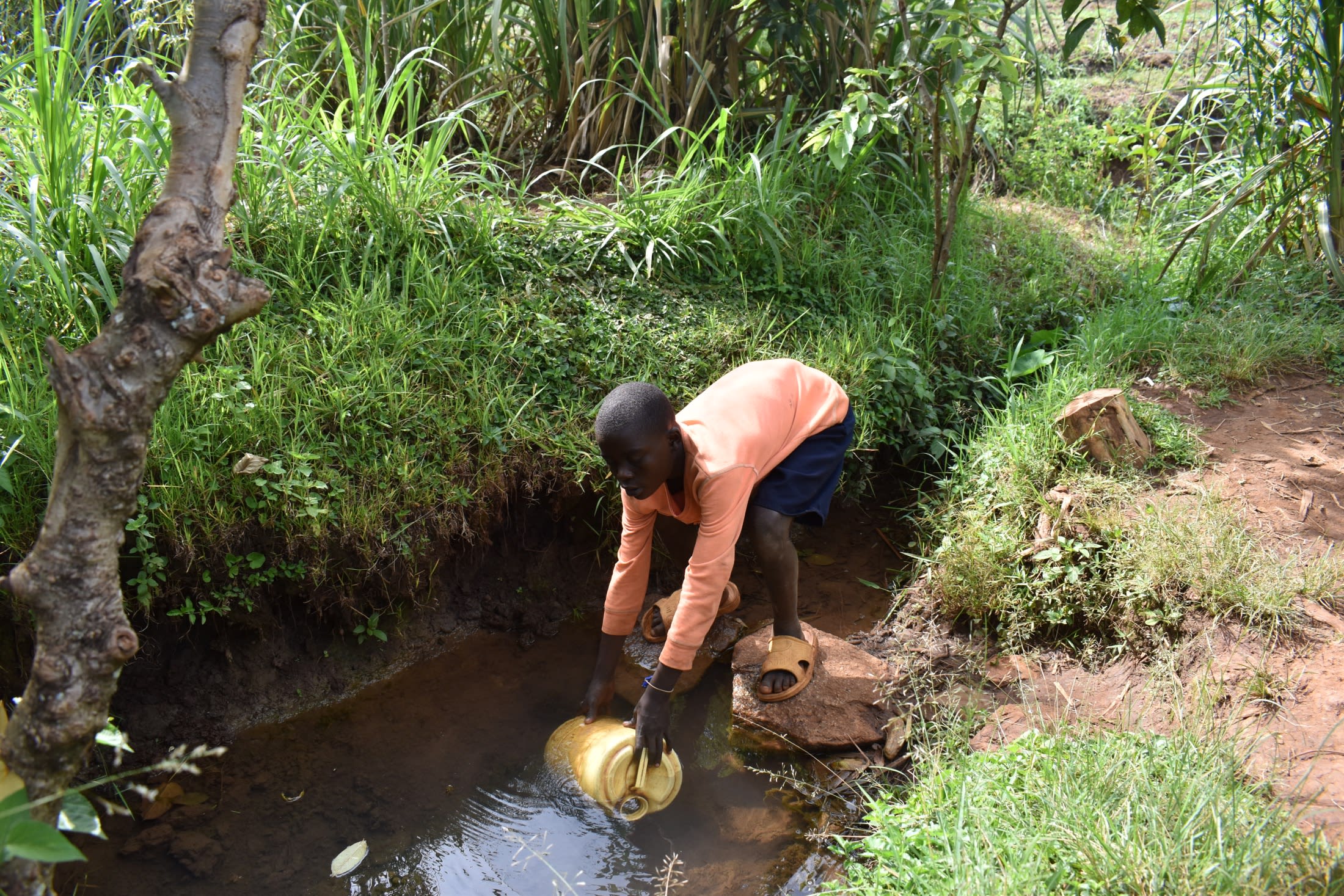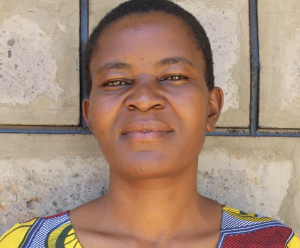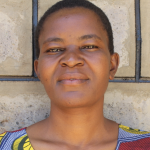For the 182 community members who live in Machemo, finding sufficient water is a daily struggle. The primary water source is a local, unprotected spring that presents several challenges to individuals and the community as a whole.
The spring is open to contamination, surrounded by grass and trees that drop debris into the water. To collect water, individuals must balance each foot on a rock, bend over, and meticulously scoop water into their jug from the small watering hole, hoping not to stir up mud that would cause the water to become cloudy. It is a slow and tedious process requiring the patience of each person waiting in line to collect water.
Rose Shilakwa (shown below), a 45-year-old farmer was brutally honest about the stress that not having access to sufficient water creates. She said, "Personally, I don't have peace with my neighbors. [My neighbor and I] fought and I injured her at the spring [when] she skipped my turn to fetch water. This forced me to pay for her medication. So I request that if possible help us by implementing this spring so that we can have clean and safe water for drinking and also peace with our neighbors."

Rose is not the only community member feeling the stress. Quarrels are common because the queues for water start before the sun has risen. Most women in the community make several trips very early in the morning so they have enough water to make breakfast for their families and to try and do some of their daily chores.
Delays at the spring also affect the children of the community, as shared by Douglas M. (shown below collecting water), age 12. "I fear going to the spring alone because the area around the spring is bushy. But when my parents force me I go, but [it causes] delays [for me] to go to school. [I] am punished every day, which makes me hate school, and [I] have really dropped in my performance."

The people of Machemo are more than ready for their spring to be protected so they can use their energy for more productive tasks and regain their community's sense of unity.
What We Can Do:
Spring Protection
Protecting the spring will help provide access to cleaner and safer water and reduce the time people have to spend to fetch it. Construction will keep surface runoff and other contaminants out of the water. With the community’s high involvement in the process, there should be a good sense of responsibility and ownership for the new clean water source.
Fetching water is a task predominantly carried out by women and young girls. Protecting the spring and offering training and support will, therefore, help empower the female members of the community by freeing up more of their time and energy to engage and invest in income-generating activities and their education.
Training on Health, Hygiene and More
To hold trainings during the pandemic, we work closely with both community leaders and the local government to approve small groups to attend training. We ask community leaders to invite a select yet representative group of people to attend training who will then act as ambassadors to the rest of the community to share what they learn. We also communicate our expectations of physical distancing and wearing masks for all who choose to attend.
The training will focus on improved hygiene, health, and sanitation habits in this community. With the community’s input, we will identify key leverage points where they can alter their practices at the personal, household, and community levels to affect change. This training will help to ensure participants have the knowledge they need about healthy practices and their importance to make the most of their water point as soon as water is flowing.
Our team of facilitators will use a variety of methods to train community members. Some of these methods include participatory hygiene and sanitation transformation, asset-based community development, group discussions, handouts, and demonstrations at the spring.
One of the most important issues we plan to cover is the handling, storage, and treatment of water. Having a clean water source will be extremely helpful, but it is useless if water gets contaminated by the time it is consumed. We and the community strongly believe that all of these components will work together to improve living standards here, which will help to unlock the potential for these community members to live better, healthier lives.
We will then conduct a small series of follow-up trainings before transitioning to our regularly scheduled support visits throughout the year.
Training will result in the formation of a water user committee, elected by their peers, that will oversee the operations and maintenance of the spring. The committee will enforce proper behavior around the spring and delegate tasks that will help preserve the site, such as building a fence and digging proper drainage channels. The fence will keep out destructive animals and unwanted waste, and the drainage will keep the area’s mosquito population at a minimum.

 Protected Spring
Protected Spring
 Rehabilitation Project
Rehabilitation Project






































